Recording Studio Skillset: How to Choose (and Care for) Your Studio Piano
Until the home piano was overtaken by the home stereo (and now the home studio), it stood as one of the most complex, engaging and rewarding musical devices ever made. Get to know more about their care and construction in this installment of Studio Skillset.
A good recording engineer should know at least a bit about the form and function of all instruments. To that end, we’ve explored drum tuning and guitar setups in prior segments of Studio Skillset, and today we turn to the care, repair, and selection of a good studio piano.
Many studios get by without having an acoustic piano at all these days; And there are certainly times when sample-based software pianos can sound nearly as good as the real thing – or perhaps even better, in the case of a rickety old spinet.
But beyond the inimitable sound of a truly great instrument, there’s something about the tactile and immersive link to our music that a real piano provides. A piano in a room can be a great motivator – even for one-finger piano dabblers. And now with the advent of integrated MIDI outputs like those found in Yamaha’s Silent Piano system, an acoustic piano can also double as the ideal digital interface.
A true concert grand can cost about as much as the best mixing boards out there, and may be overkill for most studios. But for many mid-level rooms and hobbyists, a good recording piano can be well within reach. Often, a decent piano for the studio can be bought or rebuilt for a price comparable to a channel or two of boutique microphone preamps.
Types of Pianos
There’s some confusion – even among longtime pianists – over the various types of pianos, and what we can expect of them.
Some of that confusion is understandable. There’s long been a glut of cheap pianos (by some estimates there are over 10 million functional pianos in the U.S. alone) which means there are far more instruments on the market than there is expertise.
The two basic types of pianos are verticals and grands, either of which can make for a great studio instrument. There are even many cases where a vertical can be a far better choice for the studio than a traditional grand.
Verticals
The very smallest vertical pianos on the market are the verticals known as spinets, which stand around 36” tall. After that are the consoles, which range from 40” – 43” in height.
These petite pianos became popular in the 1930s due to both the economic squeeze of the Great Depression, and the new post-Victorian fashion for furniture with a more compact footprint.
Their tone tends to be poor, especially in the lower registers, due to their limited string length, and manufacturers at times even intentionally degraded the sound of the mid-register to make the timbre more even throughout the instruments’ range.
But despite their compromised sound, this style of piano stayed popular through the mid-20th century and today, they’re among the most abundant on generic classifieds like Craigslist and Freecycle. And increasingly, prospective sellers are happy to give them away.
Generally, I wouldn’t recommend either a console or spinet as a studio piano. They will never have the tone of a larger vertical or even a small grand, and are not suitable for recording piano-centric music.
But with that said, I’ve had some great luck coaxing eerie, rickety or honky-tonkin’ good sounds out of beat-up old console pianos and spinets. In dense, rollicking americana mixes or in intimate and unusual indie rock records, there are times when a good console can take the song to a whole new plain.
If you’re bargain-hunting, and a piano is a desire but not a high priority, this kind of piano can be good value on the private used market. But bear in mind that you’ll also want to set aside a few hundred dollars for piano movers, as well as another few hundred to take care of a retune and minor repairs such as securing loose pins.
If major work is needed (more on that later) almost no spinet or console is worthy of it. Sadly and inevitably, an increasing number of these old an untended instruments are ending up in dumpsters all over the country.
Next are the studio and professional verticals, which run about 44” – 47” and 48” – 52” tall respectively.
These are the best types of verticals you’ll find on the market today, and in many cases, they can easily outperform small grands in both tone and value. A good studio vertical can sound better than a baby grand in the 5′ – 5′ 7” range, and great 52” professional models can give grands of up to 6′ a run for their money.
High-quality verticals may not offer the same bragging rights and client wow-factor of a true grand, but for recording all manner of popular music, they can be a perfect choice.
A high quality professional model from a brand like Yamaha or Kawai might carry a suggested list price of around $10,000 – $15,000 new with some room to negotiate, and fetch about half that on the used market.
A Steinway might run more in the $20,000-$40,000 range, while a lower-end brand like Baldwin or Samick might go for closer to the $5,000 new, and be a real steal on the used market; which is another strike against the prospects of a rickety old spinet being worth much of anything.
The one true drawback – aside from a potential lack of client wow factor – is that the action of even the best verticals can be slightly stiffer and more sluggish than on a true grand. This generally is not a limiting factor in popular music, but for virtuoso-style players in jazz and especially classical, a grand is generally the way to go.
Lastly, the term “upright” tends to be reserved for vintage vertical pianos that stand a full 55” – 60” tall.
These pianos, sometimes misleadingly referred to as “upright grands” were the dominant variety of vertical pianos at the beginning of the century, but fell out of favor in the 1930s and have not been mass-produced since.
It’s rare that you will find a vertical of this size in good working order, and if you do, chances are the person who has taken care of it (and likely restored it) over the course of a century knows a thing or two about its value and history.
If you find one with serious problems, such as a cracked pin block or soundboard, there’s a chance it could be worth a rebuild, depending on the brand and the extent of the repairs needed. Although the work may cost thousands, it could be a winning investment, depending on the instrument.
Grands
Studio owners who take the idea of owning a piano seriously are likely to get their hearts set on a horizontal grand piano. But on the lower-end of the price-and-size equation, they’re not always the best choice where raw sound quality and bang-for-buck is concerned.
“Baby grands”, a name now given to any piano that falls under the 5’7” mark, tend to offer less tone for more money than a professional vertical of similar build quality.
Living room grands, which range from 5’8” to 6′ can be a smart choice for the studio, and can rival the best uprights and professional verticals, all other things being equal.
Meanwhile, studio or semi-concert grands of 6′ – 7′ are a fantastic choice for recording rooms looking to attract accomplished pianists. It doesn’t get too much better than this.
And finally, there are true 9′ concert grands, which are likely to be overkill for 98% of recording rooms operating today. For the studio that spares no expense, the low register tone and overall richness of a great concert grand is unparalleled. Just make sure you have a room to match, or otherwise, what’s the point?
As you get into the larger sizes, grands will have a real edge over verticals in the tone department, a measurable advantage when it comes to action and rebound speed, and perhaps most importantly, a markedly greater ability to impress potential clients and reel in piano-centric sessions.
Care and Feeding of a Piano: Environment and Tuning
Pianos, which are generally comprised of 5,000 to 10,000 moving parts and a wood-and-steel frame that supports 20 to 30 tons of tension, are like living organisms – true musical megafauna. They breathe, they age, and they must adapt to the seasons.
When you place a piano in your recording room, be advised that it should be kept away from windows, radiators, HVAC vents and outside walls. Pianos tend to like a temperature and humidity level similar to what’s comfortable for you – though perhaps just a bit lower. Somewhere above 60 degrees Fahrenheit with a relative humidity of about 40% – 50% is usually pretty good.
Within reasonable bounds, humidity fluctuations can be more of a worry than those in temperature. If you have a fine piano and you’re concerned about your room, you might consider installing a Dampp-Chaser system, which run about $500 – $800.
Pianos also require regular maintenance, and should be tuned at least once every 3 months. This will ensure the piano should be ready to go for any session that comes in off the street.
Also note that when booking a piano-centric recording date, it’s customary to offer the option of an additional piano tuning on the morning of each session. This additional cost is traditionally charged to the client when it’s desired.
Some have come to see this as an expense that’s a vestige of another age, when recorded music was more profitable. But when it comes to high-profile recordings of instrumental piano music, daily, or at least weekly tunings, can be worthwhile. For commercial classical sessions and piano-based pop songwriters with label support, it’s not uncommon to have a piano technician on hand all day, every day during tracking
Of course, some budget-conscious studio owners go far longer than they should between tunings. Don’t be one of them! Billing for extra tunings may be standard, but your routine maintenance is not a cost you should hope to pass onto your clients.
Tunings generally cost in the ballpark of $100, and any piano that hasn’t been tuned within six months is bound to sound sub-optimal. Additionally, when you go more than a year without an honest tuning, you risk damage to the piano that could end up wiping out whatever you saved by delaying the job.
For those of you with a beater piano and little budget, learning to tune a piano is possible, challenging, and fun. At the very least, an engineer who is proficient with guitar setups may be able to tweak a note or two into compliance with a tuning hammer.
Obviously, piano tuning is not a skill that comes overnight. It takes years of constant practice to get good at solving this ultimate audio logic puzzle. I liken it to attempting to solve a Rubick’s cube and mix a record at the same time. And although I’m no expert myself, I can and have made unplanned piano takes possible that would not have happened otherwise.
If you’re just getting started with a cheap piano, you can do a lot with a simple tuning hammer, some felts, a bit of practice, and a few reads through of the now-classic guide Piano Servicing, Tuning, and Rebuilding: For the Professional, the Student, and the Hobbyist by Arthur Reblitz.
Don’t worry about putting professional tuners out of business. It’ll only make you respect them that much more.
Care and Feeding: Regulation and Voicing
The 200-some strings are not the only thing inside a piano that needs maintenance. Over time, the striking hammers – and all 50-plus parts that go into making them move – will inevitably need attention as well.
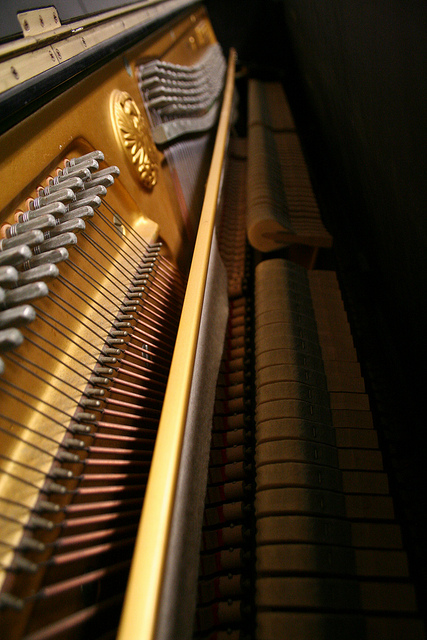
The wooden pin block sits under a brass-colored, cast-iron plate. Photo by Fire At Will.
Regulation is the act of adjusting the action of a piano by carefully calibrating the striking distance of these hammers. It’s common to have it done once every 5 years, or considerably more often on a piano that sees constant use.
When purchasing a piano, keep in mind that through regulation, action can be adjusted to some degree. There are limitations, of course: a spinet will always feel sluggish and limited in dynamic range compared to a better vertical, and a even a pro vertical will never quite obtain the remarkable quickness and fluidity of a fine grand.
Another, even more common job involving the hammers is called voicing.
Just as the action of a piano can be adjusted to some degree, so can its tone. Over time, the striking pad of a hammer can become compacted, riveted and hardened, brightening the sound of the instrument, sometimes to the point where it becomes brittle and strident.
In these cases, a tuner or technician will voice the piano by essentially fluffing or softening the hammer felts with a pin.
The opposite is also possible, and hammers can lose articulation as their striking pads flatten. To correct for this, a tuner can add synthetic hardeners or sand down the felt to create a stronger striking surface.
But you don’t need to wait for a problem to consider re-voicing a piano. This job can be done by an experienced tuner or technician for about the price of a tuning, and savvy studio owners are well-advised to ask for this work if their piano consistently records a bit too dark or too bright for their tastes.
Repair, Re-building, and What to Look for in a Used Piano
Unlike violins, for which age seems to be an unending asset, pianos do not necessarily improve as they get older. And, if you end up shopping for a used piano on the private market, you might find a whole array of pianos that have gone years between tunings and standard upkeep.
The best-case scenario when you encounter an under-loved piano is that it will require two separate tunings just to come up to pitch. More often, regulation and voicing are needed as well, so studio owners are advised to set aside at least $250 – $750 for the transport and basic repair of a neglected clunker.
The worst-case scenario is that the long span between tunings may have caused permanent problems, or may be the symptom of an underlying issue that has made the piano impossible to tune.
Thankfully, some of the underlying issues that cause tuning problems are possible to fix. If one or two tuning pins are loose, they can be repaired by hammering the pin in deeper to the pin block, replacing it with a larger pin, wrapping a sandpaper shim around the existing pin, or as a last resort, applying a synthetic pin-tightening fluid.
But all too often, the issue is much deeper than that.
If the wood pin block is cracked or fails to couple properly with the plate and frame, a true tuning becomes literally impossible. In these cases, a pin block replacement (which requires restringing) becomes necessary. It’s a job that would cost at least $2,000. That’s something that’s only worthwhile on an otherwise prestigious piano.
Repairs of this magnitude are called “rebuilding” and it’s rare that they can be done effectively within your studio. Often, the instrument will have to be moved to the technician’s shop and back.
Unfortunately, it can be very difficult to tell if the pin block is cracked on an out-of-tune piano, so if you are ever offered one, even for free, do look this gift horse in the mouth. Whenever you encounter a seriously out-of-tune piano on the market, at any price, be sure to bring along a piano tuner or technician to help evaluate the instrument.
Also be aware that evem with an old piano that’s perfectly in tune, other issues can lurk beneath the surface. When trying out a piano, be sure to listen for buzzes and rattles that would suggest a heavily cracked soundboard. Much like a cracked pin block, these issues are not easily fixed.
The soundboard of a piano is made of spruce, just like the top of an acoustic guitar; And although some slight cracking is OK – and can even be considered normal with age – when the soundboard cracks enough that it pulls away from the wood ribbing that supports it, the sound becomes distorted in a way that requires a major overhaul. Once again, this requires restringing and is considered to be “rebuild” that is likely to cost at least a couple thousand dollars.
Both of these red-line problems – an inability to keep tune and the occurrence of buzzing artifacts – can also be caused by another issue: a cracked bridge. This too requires expensive rebuilding which is only worthwhile on a potentially valuable instrument.
Getting The Most of Any Piano
The key to getting the most out of any acoustic piano is to learn to understand and embrace the incredible and sometimes subtle variations in tone and personality from one instrument to another. But the real key to making them sound great is to ensure that they are played often and well. In performance, a piano can sound refined, edgy, ephemeral, concrete, comical, or all of the above.
More than with any instrument, besides a drum-kit perhaps, nothing asks for and rewards both creative and disciplined mic’ing quite like an acoustic piano. Without care, making one sound bad is all too easy. But with the right touch, a good piano can be like a hundred beautiful instruments in one.
Justin Colletti is a producer/engineer, professor and journalist who lives in Brooklyn. He is a regular contributor to SonicScoop and edits the musician magazine Trust Me, I’m a Scientist.
Please note: When you buy products through links on this page, we may earn an affiliate commission.







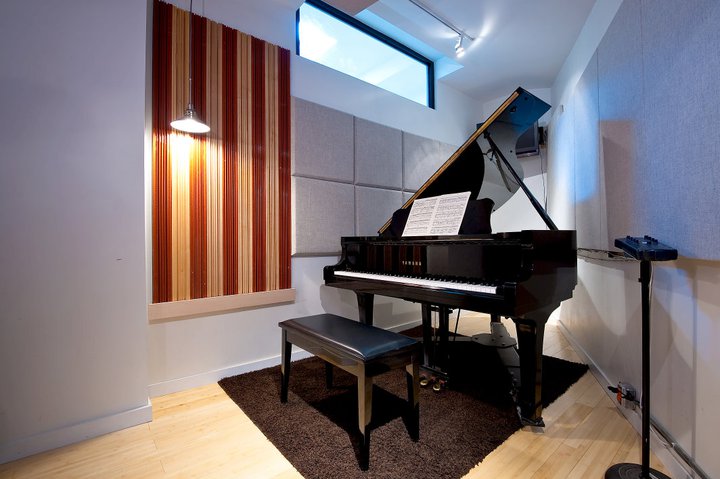
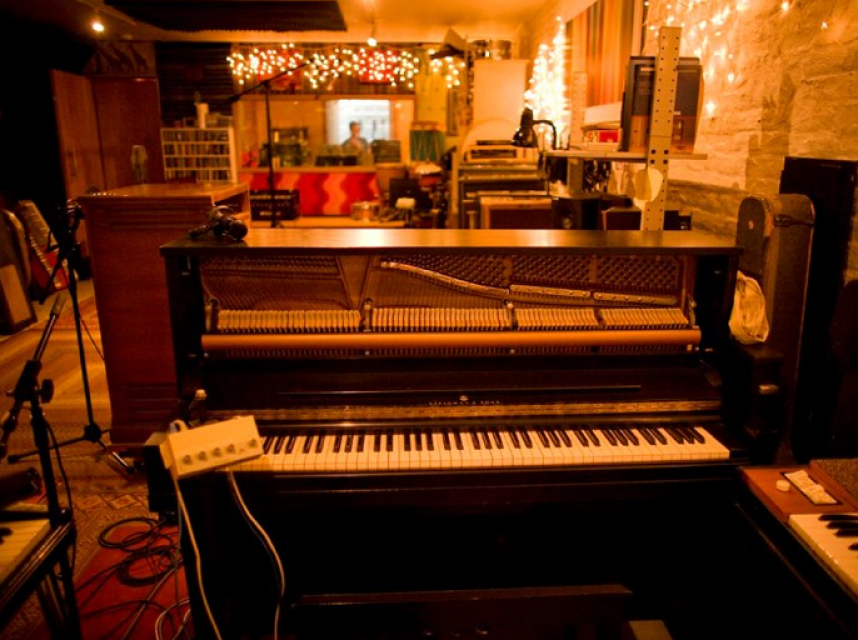
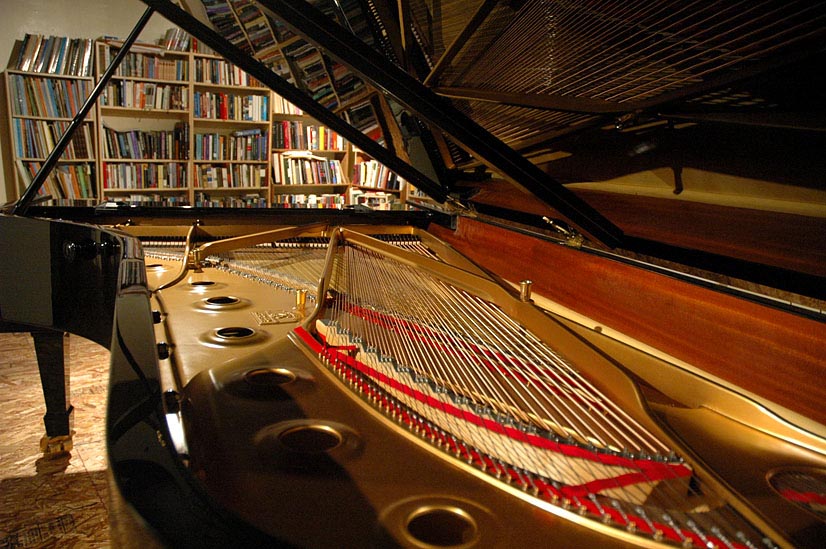
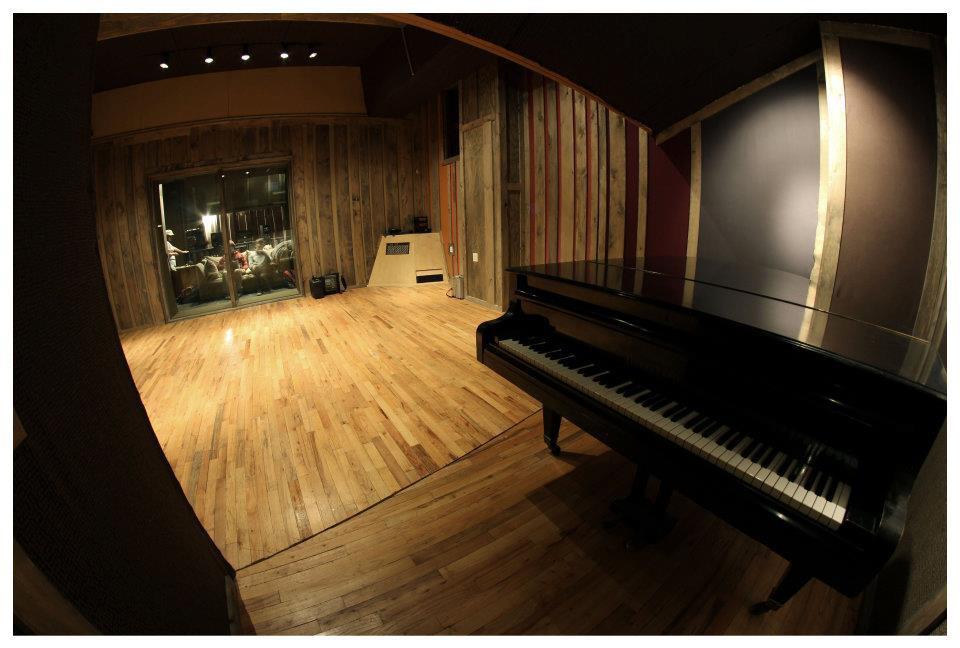
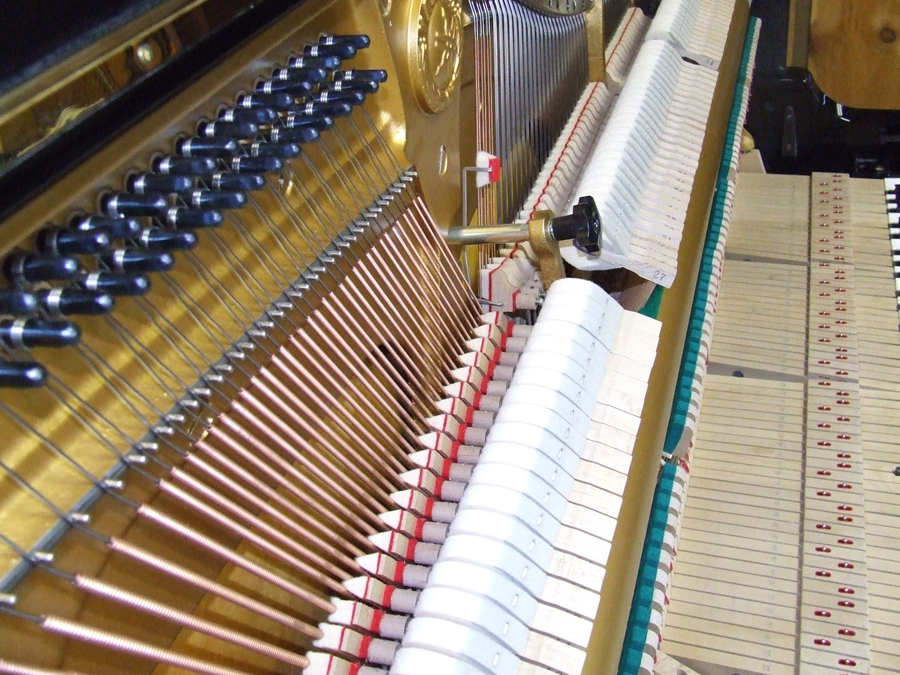
kl
November 7, 2012 at 1:28 am (11 years ago)Great overview !